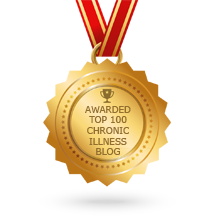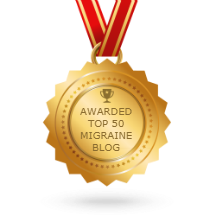What are Migraines Anyways? MHAM 2017
Welcome to #MHAM2017, Migraine and Headache Awareness Month! Last year was the first year that I participated in #MHAM. It was an amazing experience, albeit a difficult one, so I'm excited to do it again this year! A couple general announcements: every week I will be compiling the facts, pictures, and infographics and putting them into a blog every Friday. Secondly, there is a new event during MHAM this year that I am a part of that I would love to share with all of you! Shades for Migraine is starting a campaign on June 21st to raise worldwide awareness about migraines.
"on Wednesday, June 21, let the world know about it! Let the millions of sufferers know that you care... that you know they aren't faking an illness... that you know much more needs to be done to find a cure and give them relief... that you want to help give migraine disease the prominence it deserves.Wear some sunglasses all day long. They just need to be visible…hanging around your neck, hanging from your shirt or propped on your head are options if you can’t wear them on your face the entire day. Wear them indoors and in places where people usually don’t wear sunglasses. Be silly. Wear goofy ones if you dare. Let them make a statement... Start a conversation..."
I will be participating and reminding you all throughout the month to take part in this amazing campaign! Learn more at their website at www.shadesformigraine.org.
More than 37 million Americans suffer from migraines. It's estimated that 2-3 million American migraine sufferers have chronic migraines. However, these numbers do not encompass the millions of people who experience migraines and don't know about it. Many people think that migraines are just headaches. Oftentimes, someone who is experiencing a migraine may think that it was "just a bad headache." First and foremost, migraines are not a bad headache. It's a neurological condition that comes with many side effects that severely debilitates people.
So, what is a migraine?According to Professor Peter Goadsby, of King’s College London and Trustee of The Migraine Trust, migraine is an “inherited tendency to have headaches with sensory disturbance. It’s an instability in the way the brain deals with incoming sensory information, and that instability can become influenced by physiological changes like sleep, exercise and hunger.”
There are many different side effects with migraines, including but not limited to, nausea, light and sound sensitivity, inability to function and many others.
There are 4 phases to a migraine headache. Prodrome, Aura, Headache and Postdrome
Prodrome
Prodrome is the first potential phase of a migraine, and it can begin hours or days before the actual migraine hits. In a way, it’s a sort of a warning sign that you may be having a migraine. However, sometimes you may not realize that you are experiencing prodrome until the migraine has hit. Some potential symptoms are aphasia (difficulty finding words and/or speaking), difficulty concentrating, fatigue, cravings, mood changes, neck and back pain and sleepiness.
Aura
Migraines are separated into two main categories; migraines with aura and migraines without aura. Migraines with aura are only experiences by about 25% of Migraineurs, however, if you have more than 2 auras you are classified as having Migraines with aura.
Aura can look very different for each patient, however here are a list of some possible symptoms of aura.
v Allodynia (hypersensitivity to feel and touch, where what would e normal is painful)
v Aphasia
v Auditory hallucinations
v Confusion
v Decrease in or loss of hearing
v Dizziness
v Hemiplegia (one sided paralysis that only occurs in hemiplegic migraines only)
v One sided motor weakness
v Parasthesia (prickling, stinging, burning, numbness, tingling usually on the arms and legs or face)
v Olfactory hallucinations
v Visual (these range greatly from blurry vision to partial loss of sight to blind spots to wavy lines)
v Vertigo
Headache
The headache phase can be, but is not always, the most debilitating phase of a migraine. Migraines symptoms are actually not confined just to the head. Symptoms can be felt around the whole entire body. Furthermore, the headache phase can be “silent” or “acephalgic,” where you cannot feel the pain or the headache phase does not occur. These types of headaches can leave you with the same disoriented symptoms that any migraine will leave and recovery should be treated like any other migraine.
Some symptoms of the headache phase are:
v Pulsing or throbbing frequently unilateral pain, however migraine can be bilateral.
v Pain around the eyes, sinuses, teeth and jaw due to inflammation of the trigeminal nerve.
v Confusion
v Dehyrdration
v Dizziness
v Nausea and/or vomiting
v Neck pain
v Hot flashes/chills
v Heightened sensitivity to light, sound and/or odors
v Vertigo
v Anxiety/panic
Postdrome
The way that I describe how I feel after a migraine is like I’ve been “hit by a bus,” and that I have a “migraine hangover.” Postdrome can last for hours, if not days. My doctor told me that for as many days as I’ve had a migraine, I need to give myself as many days to recover. That is because postdrome symptoms may include fatigue, lowered mood levels, poor concentration and comprehension.
Migraines are so hard to treat because every symptom is individual for each and every patient. While many patients experience some of the same symptoms, each migraineur has different triggers and pain solutions. For me, going gluten free, undergoing allergy immunization, Botox, biofeedback and other preventative medications have helped me immensely. However, there is no cure for migraines, only ways to manage it. Only increased education and awareness can help to find more effective solutions for migraine pain and prevention.
As always, have an amazing, migraine-free week!
 ❤️
❤️









2 comments: